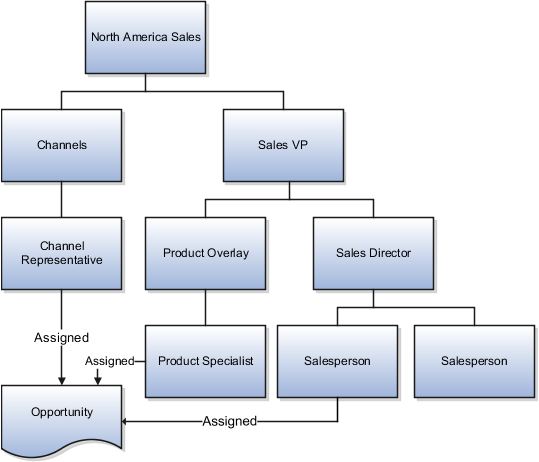Territory-Driven Visibility
After territories are assigned to transactional objects, territory team members gain visibility into these objects through the territory hierarchy.
In this figure, a salesperson Dave Smith has access to the account because his territory is directly assigned to the account record. His regional manager and sales director also gain access to the same account because their territories are ancestors of Dave's territory. By contrast, Regional Manager 2 doesn't have access to the account because her territory isn't a direct ancestor of Dave's territory.

Combining flexible assignment rules and territory-driven visibility, you gain precise control over data visibility and data sharing policies. For large enterprise sales organizations with complex sales teams such as the following example, shared visibility on customer and opportunity data can further facilitate collaboration and team cross-selling. This figure shows the North America Sales team that includes channels and a sales VP. The sales VP has a Sales Director managing salespeople, and a Product Overlay group with a product specialist. The Channels division includes channel representatives. An opportunity is assigned to a channel representative, a product specialist, and a salesperson.
